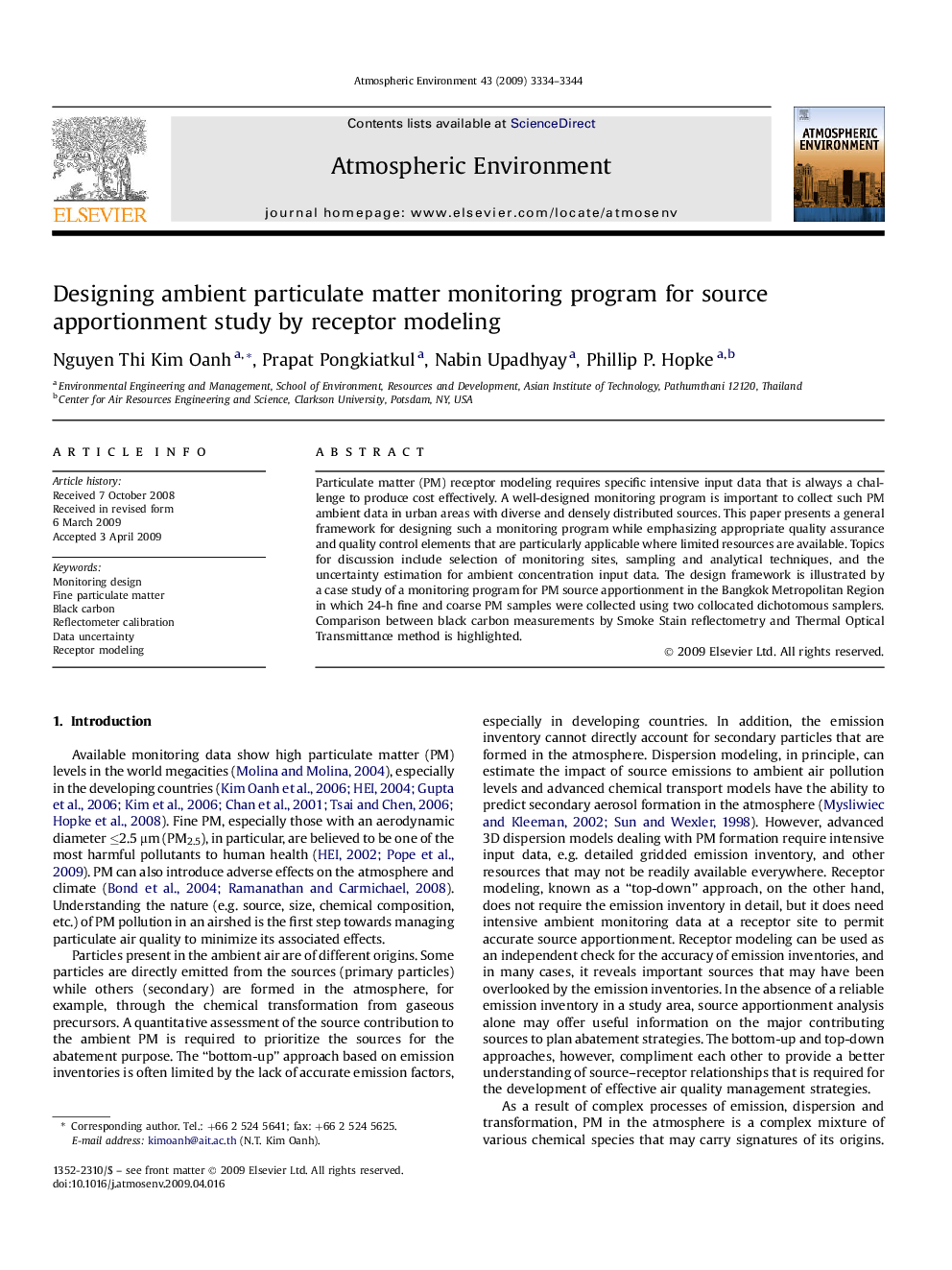| Article ID | Journal | Published Year | Pages | File Type |
|---|---|---|---|---|
| 4441588 | Atmospheric Environment | 2009 | 11 Pages |
Particulate matter (PM) receptor modeling requires specific intensive input data that is always a challenge to produce cost effectively. A well-designed monitoring program is important to collect such PM ambient data in urban areas with diverse and densely distributed sources. This paper presents a general framework for designing such a monitoring program while emphasizing appropriate quality assurance and quality control elements that are particularly applicable where limited resources are available. Topics for discussion include selection of monitoring sites, sampling and analytical techniques, and the uncertainty estimation for ambient concentration input data. The design framework is illustrated by a case study of a monitoring program for PM source apportionment in the Bangkok Metropolitan Region in which 24-h fine and coarse PM samples were collected using two collocated dichotomous samplers. Comparison between black carbon measurements by Smoke Stain reflectometry and Thermal Optical Transmittance method is highlighted.
